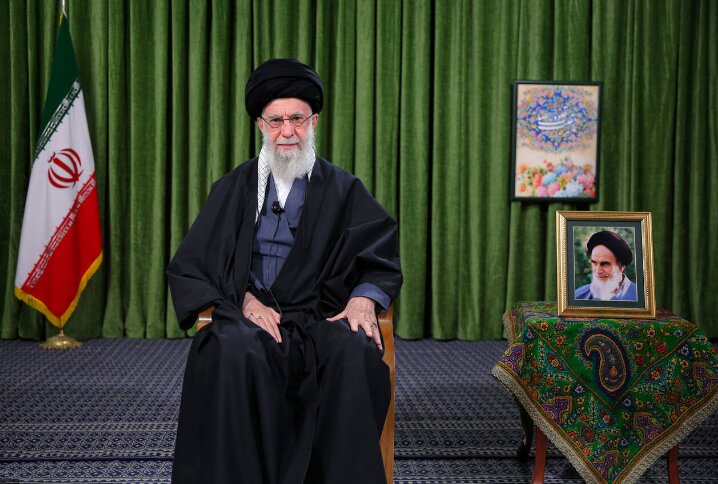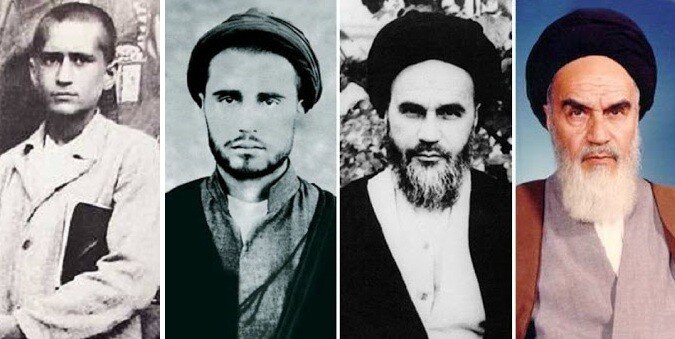June 3rd marks the 35th anniversary of the demise of the late founder of the Islamic Republic, Imam Khomeini (RA) who is known as an ever-living truth and flag of the Islamic revolution.
Imam Khomeini was a Muslim cleric and Marja, as well as the political leader of the 1979 Islamic Revolution of Iran, which overthrew Mohammad Reza Pahlavi, the last Shah of Iran. After the Revolution, he became the Leader of Iran, the paramount figure in the political system of the new Islamic Republic, until his passing.
Imam Khomeini was a brave and thoughtful leader who understood the issues of Iran and the Muslim World. His religious, social, cultural, and political ideas remain influential even three decades after his demise.
Imam Khomeini, the founder of the Islamic Revolution of Iran, passed away on June 3, 1989. He founded the Islamic Revolution in Iran in 1979 with massive support from Iranians.
Every year, a large number of people and officials gather at Imam Khomeini’s shrine in the south of Tehran for a commemoration ceremony. Millions of Iranians from around the country travel, some on foot, to pay tribute to the late architect of the Revolution.

On the first anniversary of the demise of Imam Khomeini, Leader of the Islamic Revolution Ayatollah Seyyed Ali Khamenei in a message said, “Imam Khomeini is an ever-living truth. His name is the flag of this Revolution, his path is the path of this Revolution, and his goals are the goals of this Revolution.”
On June 4, 2021, Ayatollah Khamenei considered Imam Khomeini’s comprehensive knowledge and mastery of Islamic teachings as the basis for the creation and realization of the theory of the Islamic Republic and said: Imam Khomeini had acquired the necessity of Islamic rule and belief in the people from the heart of pure Islam and believed in them sincerely.
Ayatollah Khamenei, referring to some of Imam Khomeini’s statements about Islam and democracy, added: “From Imam Khomeini’s point of view, Islam is on the one hand” anti-petrification, anti-eclecticism “,” anti-oppression, arrogance, corruption, and greed, “anti-American domination and foreign intervention”, “anti-aristocracy and class divisions”, and on the other hand Islam is “pro-deprived and justice-seeking people”.
The Leader of the Islamic Revolution said: “Thanks to God, even after the death of the Imam, the people of Iran have maintained the divine gift of religious democracy and have stood firm against the enemies’ conspiracy to separate the people from the system and make them disbelieve in Islam and religious democracy.”
Brief biography of Imam Khomeini (RA)

Rouhullah Khomeini was born on the 24th of September 1902. His father was Agha Mustafa Mujtahid Kamareh’i. Rouhullah was the grandson of Seyyed Ahmad and the great-grandson of Deen Ali Shah.
Rouhullah lost his father when he was four months old.
After learning Qur’an at home Rouhullah went to school at the age of seven. He started to take lessons from Mullah Abul Qasim. He then went to Sheikh Ja’far’s Maktabkhaneh.
In 1921, Imam Khomeini commenced his studies in Arak. The following year, Ayatollah Haeri-Yazdi transferred the Islamic seminary to the holy city of Qom and invited his students to follow. Imam Khomeini accepted the invitation, moved, and took up residence at the Dar al-Shafa school in Qom before being exiled to the holy city of Najaf in Iraq. After graduation, he taught Islamic jurisprudence (Sharia), Islamic philosophy, and mysticism (Irfan) for many years and wrote numerous books on these subjects.

After eleven days in a hospital for an operation to stop internal bleeding, Imam Khomeini died of cancer on Saturday, June 3, 1989, at the age of 89. Many Iranians mourned Imam Khomeini’s death and poured out into the cities and streets after his passing was announced 35 years ago. More than 10 million people from across the country attended Imam Khomeini’s funeral to form one of the largest-ever funerals in the world.
Following Imam Khomeini’s demise, Ayatollah Seyyed Ali Khamenei was selected on June 3, 1989, by the Assembly of Experts to be his successor, in accordance with the Constitution.
 صراط عشق صراط عشق
صراط عشق صراط عشق




